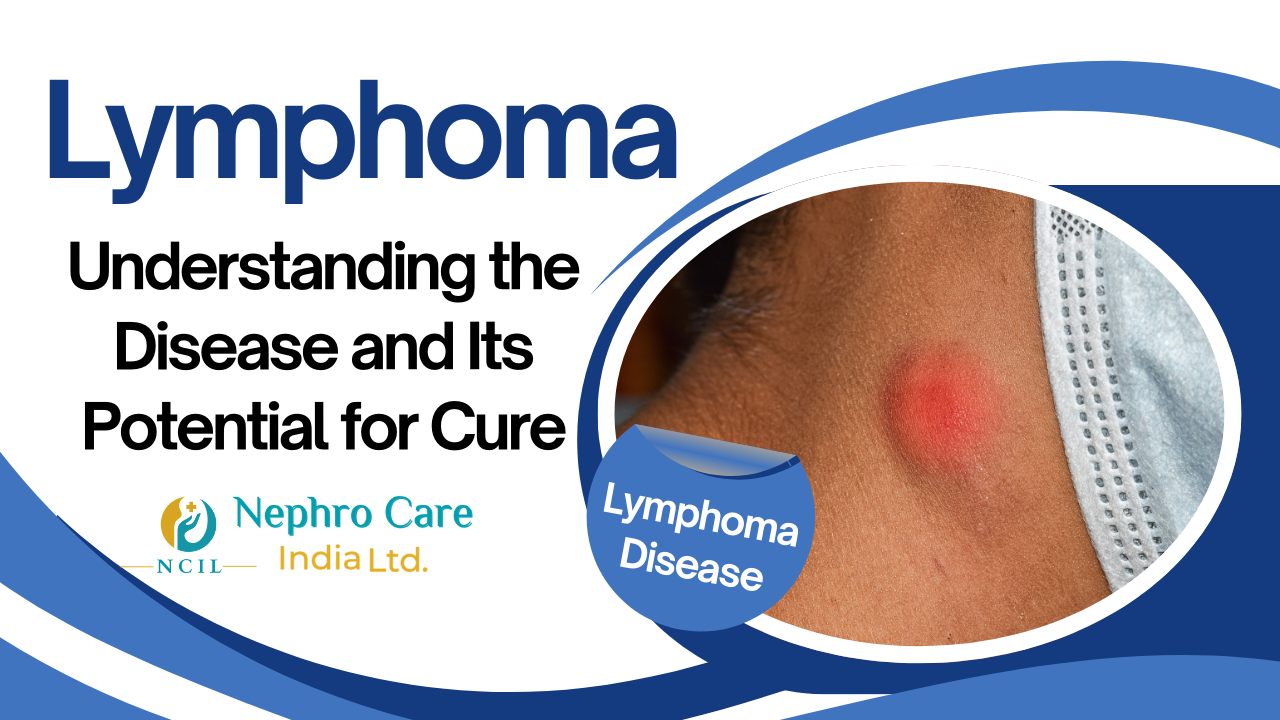Lymphoma: Understanding the Disease and Its Potential for Cure
Lymphoma is a type of cancer that originates in the lymphatic system, a crucial component of the body’s immune system. This system comprises a network of lymph nodes, lymph vessels, and other organs that work together to fight infection and disease. When lymphocytes, a type of white blood cell, begin to grow uncontrollably, they can form tumors in the lymph nodes or other parts of the lymphatic system, leading to lymphoma.
Types of Lymphoma
There are two main types: Hodgkin lymphoma (HL) and non-Hodgkin lymphoma (NHL).
- Hodgkin Lymphoma (HL): This condition is distinguished by the presence of Reed-Sternberg cells, which are large, abnormal cells absent in other types of lymphatic cancers. Although less common, Hodgkin disease typically has a higher cure rate compared to other lymphatic malignancies.
- Non-Hodgkin Lymphoma (NHL): NHL refers to a diverse group of cancers affecting the lymphatic system, each with unique features and behaviors. It represents the majority of cases and can develop at any age. There are various subtypes, which are classified by their growth patterns, ranging from indolent (slow-growing) to aggressive (fast-growing) forms.
Causes and Risk Factors
Researchers have identified several risk factors for lymphoma, but the exact cause remains unclear.
- Age: Lymphoma can occur at any age, but certain types are more common in specific age groups. For instance, Hodgkin disease is often diagnosed in young adults, while non-Hodgkin disease is more prevalent in older adults.
- Immune System Deficiency: Individuals with weakened immune systems, whether due to HIV/AIDS, organ transplants, or congenital conditions, are at a higher risk of developing lymphoma.
- Infections: Certain infections, including Epstein-Barr virus (EBV) and Helicobacter pylori, are linked to an increased risk of lymphoma.
- Family History: A family history can increase an individual’s risk, although this is less common.
Symptoms of Lymphoma
Common symptoms include:
- Swollen lymph nodes, often painless, in the neck, armpits, or groin
- Fever without an obvious cause
- Night sweats
- Unexplained weight loss
- Fatigue
- Itching
- Persistent cough or difficulty breathing.
These symptoms can be caused by many other conditions, so a thorough medical evaluation is necessary for an accurate diagnosis.
Diagnosis:
- Complete blood count (CBC)
- Erythrocyte Sedimentation Rate (ESR)
- Lactate Dehydrogenase (LDH)
- Liver Function Test (LFT)
- Renal Function Test (RFT)
- Serum protein electrophoresis (SPEP)
- CT Scan
- PET Scan sometimes MRI mainly biopsies
For any assistance with lab tests, please contact our care path team
Can Lymphoma Be Cured?
The potential for curing lymphoma depends on several factors, including the type, its stage at diagnosis, the patient’s overall health, and response to treatment.
Hodgkin Lymphoma: Hodgkin lymphoma is considered one of the most treatable forms of cancer, especially if detected early. With advances in treatment, such as chemotherapy, radiation therapy, and targeted therapies, many patients achieve complete remission.
Non-Hodgkin Lymphoma: The prognosis for NHL varies widely due to its numerous subtypes. Some forms, like diffuse large B-cell lymphoma (DLBCL), are aggressive but respond well to intensive treatment, with a significant number of patients achieving long-term remission. Although indolent cancers like follicular cancer are generally not considered curable, patients can manage them effectively for many years with appropriate treatment.
Treatment Options
Treatment for lymphoma often involves a combination of therapies, depending on the type and stage of the disease:
- Chemotherapy: It involves using drugs to kill cancer cells or stop them from growing.
- Radiation Therapy: High doses of radiation target and kill cancer cells, often combined with chemotherapy to treat Hodgkin’s disease or localized forms of non-Hodgkin’s cancer.
- Targeted Therapy: These drugs target specific molecules involved in the growth and survival of cancer cells. Rituximab is a commonly used targeted therapy for certain types of NHL.
- Immunotherapy: This treatment boosts the body’s immune system to fight cancer. CAR T-cell therapy, a type of immunotherapy, has shown promising results in treating some types of lymphoma that have not responded to other treatments.
- Stem Cell Transplant: In some cases, doctors may recommend a stem cell transplant to restore healthy bone marrow after intensive chemotherapy or radiation.
Conclusion
While the journey of treating this cancer can be challenging, advances in medical science have significantly improved the outlook for many patients. Hodgkin’s disease is often curable, especially when detected and treated early. Non-Hodgkin’s forms, with their various subtypes, present a more complex scenario, but many patients can achieve remission or manage the illness effectively with modern therapies. Early diagnosis, personalized treatment plans, and ongoing research provide hope for continued progress in the fight against these conditions.

